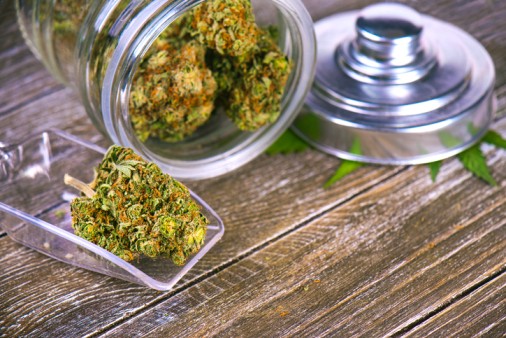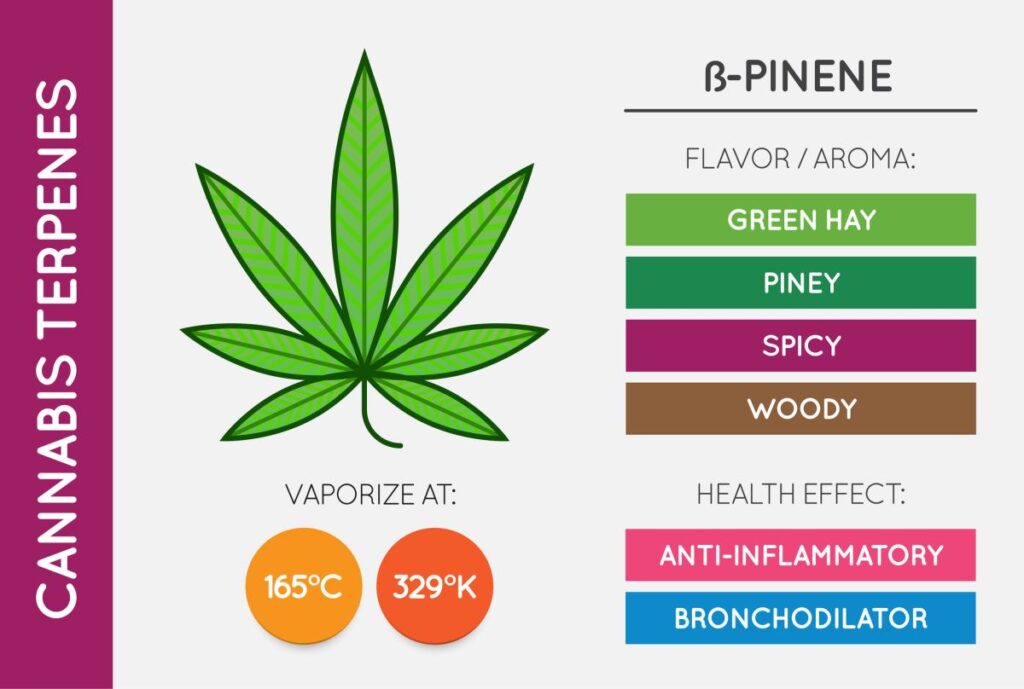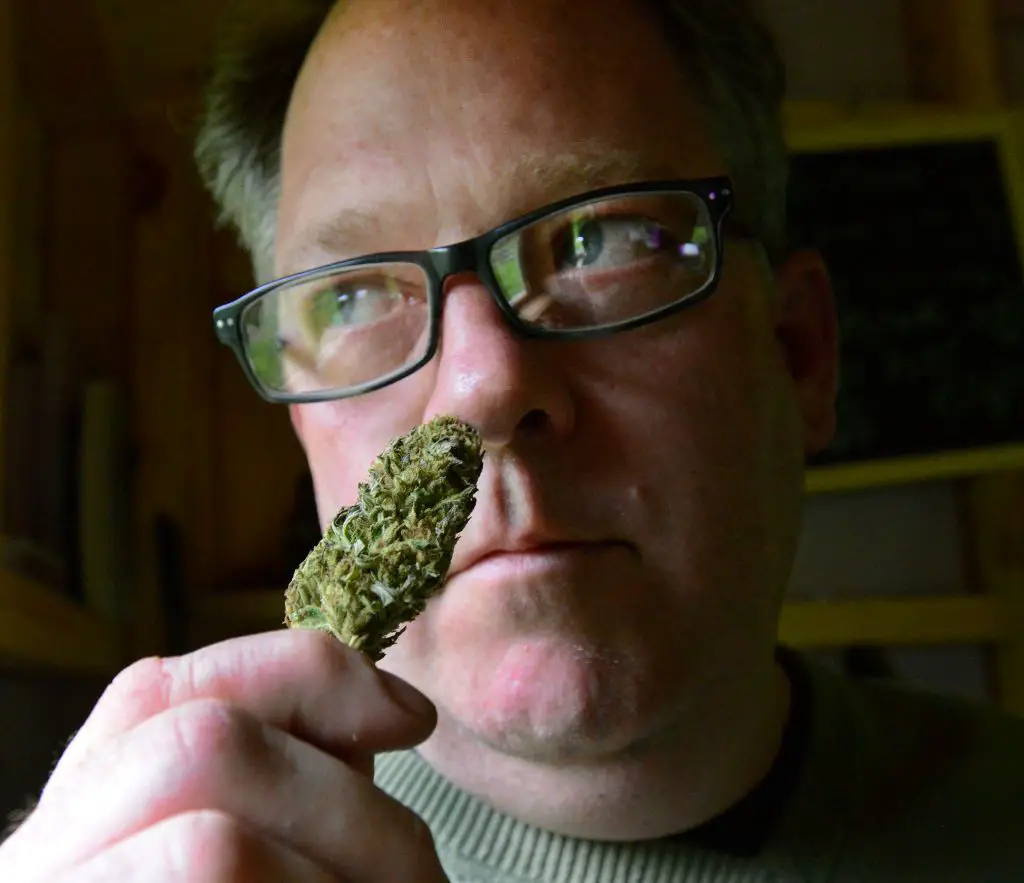The weed aroma plays a vital role in your overall cannabis experience.
While some buds fill your room with a citrus scent when you open the jar, sometimes the weed smells like cat pee, and you can’t tell whether the smell is natural to the strain or when it’s gone bad.
This post contains affiliate links. If you buy through them, I’ll get a commission at no extra cost to you.
Cannabis comes in many strains, and each has its distinct smell. Terpenes, the chemical compounds that give the weed its aroma and flavor, also come in varieties.
There are 400 known terpenes, and that can broaden the spectrum of your aroma, making it difficult to know when to smoke or trash your buds.
But the fact that most users have stumbled on weed that smells like cat pee validates your concern for your weed aroma.
Nobody wants cat pee weed, and I can only light a pee-smelling weed when I’m assured the scent is natural.
Table of Contents
Can Weed Smell Like Cat Pee?
Weed can smell like cat pee if it’s gone bad, but not all weed that smell of cat pee is stale and should be thrown out. Sometimes the smell comes from the weed’s terpenes and is thus natural and safe for consumption.

Weed that smells like cat urine can be safe for use if it’s the buds’ natural aroma.
Some haze varieties, like the Ghost Train Haze, smell like cat pee naturally. You’ll know it’s the natural smell when the buds aren’t accompanied by mold.
However, if the buds have mold, they have gone stale, and the smell you get results from ammonia.
Buds having mold doesn’t necessarily mean they’ve got ammonia, but it will smell of ammonia, damp bathroom, or freshly cut grass.
Degrading weed isn’t safe for consumption. The dangers of consuming mold in weed far outweigh the high you can get from smoking it.
We wrote a lengthy article on the dangers of smoking moldy weed. It could tighten your resolve to know the quality of your weed before consuming it.
Some strains of weed have foul-smelling scents even when they’re in their best health.
Most of these strains will have tastes that don’t align with the smell nor the names they’re christened. For instance, most users agree that Tangie smells more of citrus than tangerine!
Another cannabis strain notorious for smelling like cat piss is the “Cat Piss” strain. The strain smells awful, but users still return to it, thanks to its longer-lasting uplifting high.
Let’s dig further into what could make your weed smell like cat piss.
Why Does Weed Smell Like Cat Pee?
Your weed smells like cat pee for several reasons. First, it could be the strain’s natural aroma and thus safe for consumption. Other times, the cat pee smell results from poor drying and curing or the dreaded mold invasion.
It thus helps to know the reason behind the cat pee smell.
You don’t want to smoke mold-infested buds, but it’s not wise to lose potent buds because of the loud cat pee terpene in them.
Here are some reasons why your weed smells like cat litter:
Poor Drying, Curing, and Storage
The drying and curing process is essential to the resultant quality of your buds.
The drying and curing process allows the cannabis buds to lose moisture in a controlled manner— retaining just the right amount of moisture for the bud’s health.
But the drying and curing process also does more to the buds than just lose moisture. They help accentuate the bud’s natural smell. If you hasten the process, the buds will have a weird smell.

Sometimes the weed smells like cat pee because it got into the curing process too early. Dealing with the ‘wetness’ requires speed because you risk losing the buds to mold.
Proper curing is essential in retaining the cannabis strain’s aroma. After drying, the buds will lose their natural smell only to regain it after curing.
But sometimes the curing process fails to outdo your mistakes in the drying process, leaving your weed smelling of cat pee or anything else but weed.
The rule of thumb is to pay close attention to the drying and curing process— never rush it!
If you rush the curing process, the buds will end up with weird smells, sometimes with the dreaded cat pee smell.
The buds should lose only the water it doesn’t need while retaining a level of moisture that keeps them healthy and potent.
Also, your weed could contain ammonia due to poor storage. Weed that smells of cat pee because it contains ammonia isn’t safe for users.
The Strain’s Natural Terpenes
Some strains will smell of cat piss by default— without defects, and this kind of smell doesn’t hurt the quality of your buds.
Before you toss the buds aside for smelling like cat pee, check other indicators of bad weed like mold or dampness.

Luckily most users can differentiate the foul-smelling ammonia caused by mold from the natural scent of the piney/cat pee terpenes.
It’s not something you’ll struggle with as ammonia has that choking effect that you don’t get with weed that smells like cat pee naturally.
The Weed Has Gone Bad
Sometimes, the weed smells of cat piss because it has gone bad.
When weed goes bad and begins to degrade, not only does its appearance change, but its smell can also become weird.
Mold infestations engulf your buds in a pungent smell other than the natural strain aroma.
It’s great you can’t mistake the smell of moldy weed for that of healthy buds— you can always tell when the weed is damp and doesn’t exude a natural aroma.
How to Spot Moldy Weed
The easiest way to spot moldy weed would be to use a black light and watch for a green color.
Moldy weed also shows as black or dark green spots. You may also notice a musty odor and grayish-white stringing from the forming buds.
To the untrained eye, trichomes and mold may look a lot alike. Which makes novice users mistake moldy weed for a cannabinoid-rich bud.
Trichomes give cannabis its rich aroma and look like sticky, shiny crystals.
Unlike trichomes, mold often has a powdery appearance and distinct mildewy smell that reminds you of hay. You can also use a 10X magnifying lens to spot the difference.
If you harvest moldy weed, they can only get worse in the drying and curing process. Thus the process of keeping your buds from mold begins before the buds are harvested.
After harvesting, your resolve to shut the mold out should only get tighter. You don’t want to lose your jars of buds to mold infestation in the curing process.
When you burp the jars during curing, what scent hits your nostrils? Is it damp? Does it smell of freshly cut grass or the dreaded cat piss?
The little questions will help you uncover a mold problem before it hits and spreads.
What Does Moldy Weed Smell Like?
Most people can identify moldy weed by its smell. Unlike fresh weed that uplifts your spirits with a distinctive aroma, moldy weed has a musty smell reminiscent of a damp basement.
Moldy weed doesn’t necessarily contain ammonia, but it can smell of ammonia— or something closer.
The smell of moldy weed might also remind you of hay. It’s a musty smell that you can’t mistake.
The Entourage Effect
Cannabis contains different terpenes and flavonoids, and these terpenes have their known distinct smell.
However, when these terpenes come together, they interact, creating a new overall aroma that belongs to neither of the individual terpenes.
The smell these terpenes and flavonoids pull together is known as the entourage effect— only possible with more than one terpene contributing to the overall scent that your nose catches.
The entourage effect may make your weed smell like cat pee.
The good news is, provided the buds are healthy, the entourage effect doesn’t hurt their quality. They are safe and can be consumed without adverse effects on the user.
What To Do About Weed That Smells Like Cat Pee?
How to deal with weed that smells like cat pee will depend on your evaluation of the buds and the cause of the cat pee smell.
While it’s not right to say all weed that smell of cat pee should be trashed, it’s good to accept that sometimes, trashing the weed is the best thing to do.
Study your buds and identify why your pot smells like cat pee. If it’s natural, imbibe the weed— the bud’s not a health risk (even when the smell isn’t so welcoming).
On the other hand, if the buds smell of cat piss as a result of mold infestation, throw them out. Mold isn’t good for your buds, whether as edibles or joints!
When the buds smell of cat pee because of poor curing, there is nothing really you can do because once the curing period elapses, it’s impractical trying to get the smell back. However, the weed will be good for consumption.
Unfortunately, poorly cured weed also lacks potency, and thus your cat-pee-smelling weed might not give you the high you’re hoping for.
What Terpene Smells Like Cat Pee?
The terpene that comes close to smelling like cat pee is myrcene. On its own, myrcene smells nice, giving off an earthy, reminiscent smell.
However, when mixed with other terpenes, myrcene can make your weed smell like cat pee.
There are over 400 terpenes, and knowing them and their distinct smell can be challenging, but generally, cannabis strains of the Haze variety are the most likely to smell like cat pee.
The most common strain that smells of cat urine is the Sativa-dominant “Cat Piss,” a pheno of Super Silver Haze. Other strains that smell of cat pee include Cheese Dawg, Sour Diesel, and Ghost Train Haze.
Frequently Asked Questions About Weed Smells
Well, weed sometimes surprises you with its weird smells. And the weed aromas are a broad topic, given the varieties of terpenes in them.
Let’s look at some of the most frequently asked questions about weed smells.
In conclusion, your weed can smell of cat pee, and though most users don’t like it, sometimes it’s nothing to worry about. The buds could be drenched in the cat pee smell because of the entourage effect or the weed’s natural terpenes.
You should, however, toss the cat pee weed if it shows signs of mold or reeks of ammonia as a sign of poor storage, rot, and degradation.

